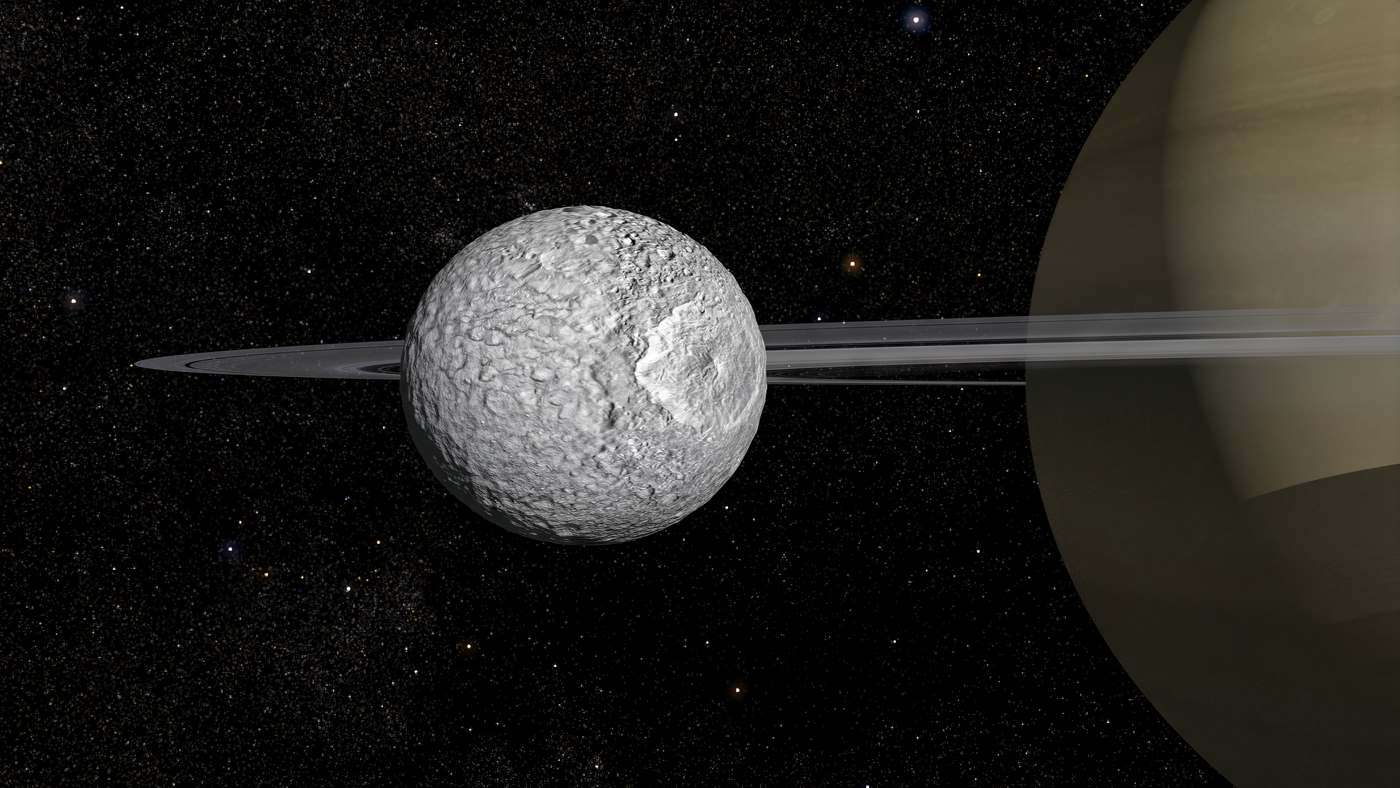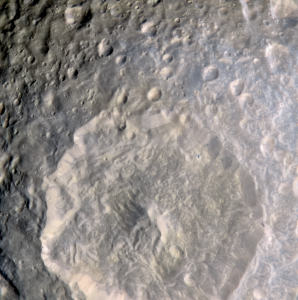Researchers Create CRISPR 'On-Off Switch' to Control Inherited Genetic Problems Without Changing DNA
Scientists have figured out how to modify the gene-editing tool CRISPR to control how genes are switched on or off, without changing DNA.

Reprinted with permission and alterations from World at Large, an independent news outlet covering world news, conflicts, travel stories, conservation, and science news.
It's been known for a decade that Saturn's icy moon of Enceladus almost certainly hides a subsurface ocean beneath its northern pole. But as scientists writing in Nature recently challenged, the same is true for a much smaller and unlikely moon called Mimas.
Think of a glacier shaped like a ball the size of California or Spain and you have some idea of what Mimas looks like. Imagining this compact snowball becomes a bit more difficult if you think that between 12 and 18 miles down lies a contained ocean containing a little less water than the whole Mediterranean Sea.
These subsurface oceans on icy moons are extremely exciting targets for astrobiologists since it's believed that life first evolved on Earth in its shallow seas. These cryo-geologic features are present on Enceladus and the Jovian moon of Europa, but until now, no one was looking at bodies as small as Mimas, which is many times smaller than the other two.
"Mimas is a small body whose most distinctive feature is a crater so large that it gives the moon the appearance of the Death Star space station from the Star Wars franchise," writes Matija Ćuk from the SETI Institute in California, and Alyssa Rose Rhoden from the Southwest Research Institute, who together wrote a comment on the paper.
Previous research has suggested two possibilities for Mimas' interior: either an elongated rocky core or a global ocean. The latest analyses by Valery Lainey and her colleagues at the Observatoire de Paris, reveal that changes to the rotational motion and orbit of the small moon are affected by its interior in such a way as to suggest that beneath its cratered, pock-marked exterior, there lies an ocean and not a rocky core.
To do this, Lainey et al. took careful measurements of the moon's moments of inertia, or its resistance to rotational acceleration. The inertia allowed the team to understand the moon's gravitational field.
The team used data from the Cassini spacecraft, which has been exploring the Saturnine environment for many years and led to some of the largest advances in the understanding of the famous ringed planet and its moons.
Time for a science lesson: Saturn and Earth are slightly flattened planets. Among other things, this causes the orbit path of moons to shift in a flat circular motion. Take a ball in one hand and a ring in the other, then move the ring in a flat motion without touching the ball within, and you have a visual picture of this phenomenon.
For the sake of the example, if the ball (or planet) is rotating clockwise, and the ring (or orbit) is moving clockwise as well, this is the effect that flattened planets have on the precession, or shifting of the orbital path, of their moons. If the moon's shape and/or gravitational field are elongated like an egg, this phenomenon is reversed, i.e. the planet and moon rotate clockwise, but the orbital path is rotating counterclockwise.

What Lainey and her colleagues discovered is that Mimas' orbital precession is the latter case, but if so, the movements of a frozen body of ice and rock do not match the patterns of inertia recorded. Instead, the measurements of Mimas' position suggest that the evolution of its orbit is better explained as being influenced by an internal ocean.
The authors calculate that the ocean lies beneath an icy shell approximately 12 to 18 miles (20–30 km) deep. Simulations suggest that it appeared between 25 and 2 million years ago. As such, signs of such an ocean would not have had time to make a mark on the surface, such as heavy fracturing on the surface of Europa, or the cryo-volcanoes that spew out ice, gas, and sloshy material present on Enceladus.
"The idea that Mimas' ocean could have formed relatively recently also has implications for other features of the Saturnian system that remain mysteries, in spite of clues retrieved by the Cassini mission," explain Ćuk and Rhoden.
"Saturn's bright icy rings are apparently young in geological terms, but not all scientists agree. The heavily cratered icy moons seem ancient, but the source of the bodies that made the craters is disputed, and there are suggestions that the moons themselves are also geologically young".
"The clues provided by Mimas and its ocean could help to resolve some of these conundrums. Finally, adding Mimas to the catalogue of ocean worlds changes the general picture of what these moons can look like. The idea that relatively small, icy moons can harbor young oceans is inspiring, as is the possibility that transformational processes have occurred even in the most recent history of these moons," they add.
Lainey and colleagues' findings will no doubt motivate a thorough examination of mid-sized icy moons throughout the solar system, of which there may be dozens. Most notably, there is a suite of mid-sized icy moons orbiting Uranus, which was selected as the highest-priority target of a NASA flagship mission by the Planetary Science and Astrobiology Decadal Survey. WaL
SHARE This Amazing Discovery Of Oceans On Tiny Moons…
Be the first to comment